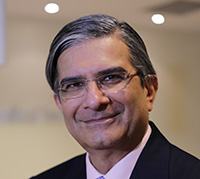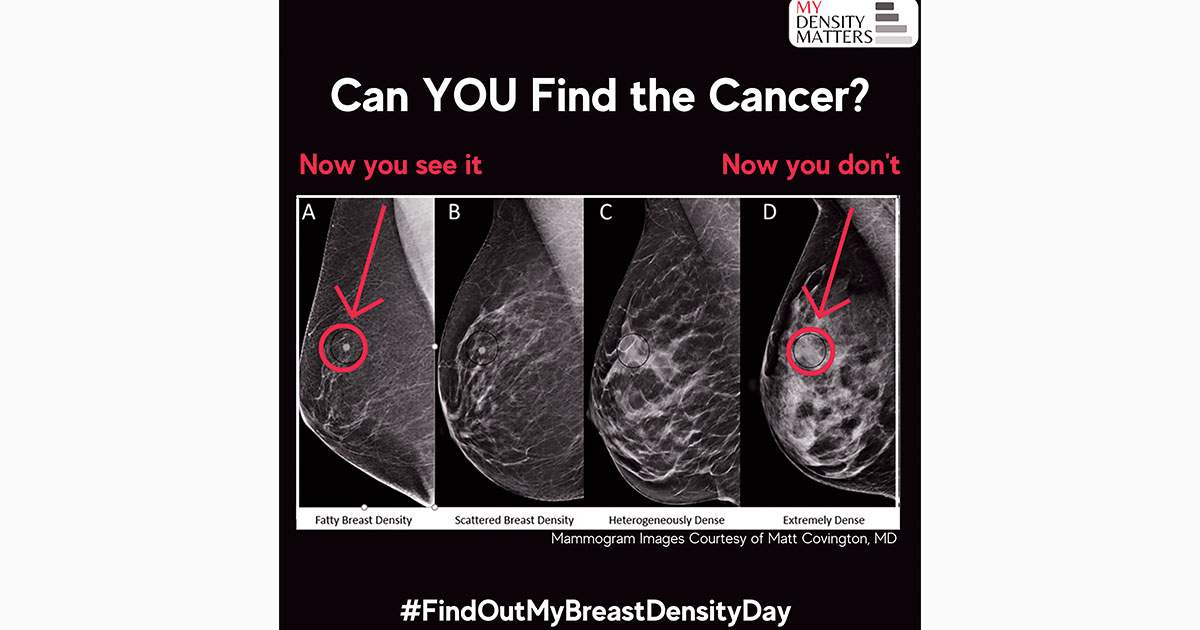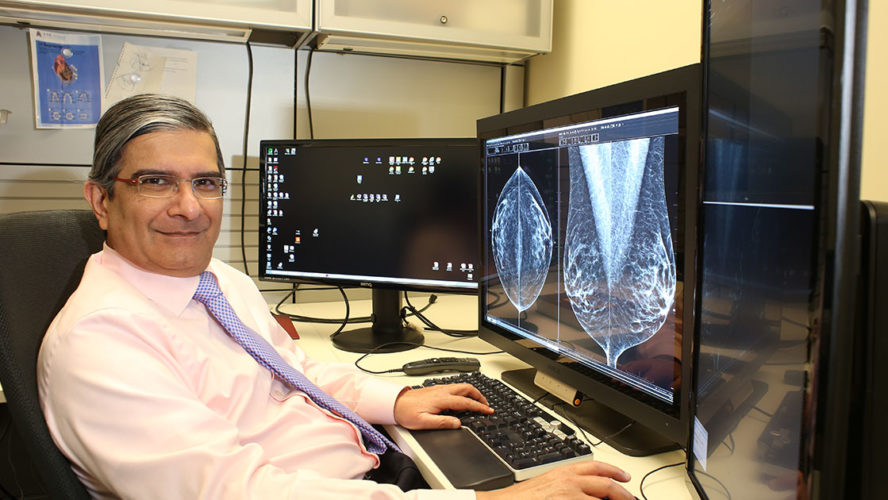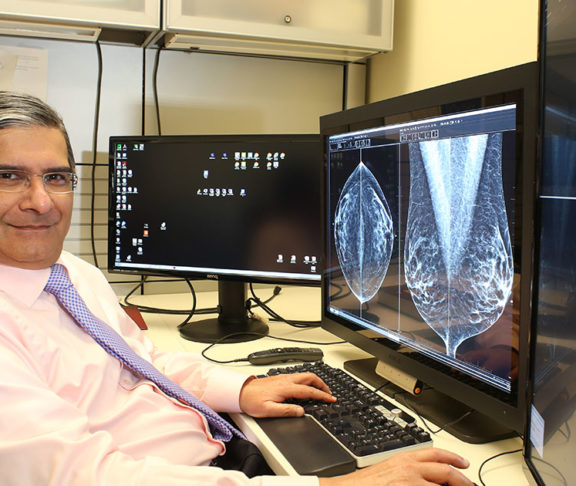
Dr. Alnashir Ismail
Diagnostic Radiologist & Owner, Toronto Centre for Medical Imaging
Cancer screening has been disrupted in Canada due to the COVID-19 pandemic. According to Ontario Health, during the first wave there was a significant decrease in screening in Ontario compared to the same period in 2019: A 97 percent decrease in screening for mammograms through the Ontario Breast Screening Program has been reported.1
In addition, approximately 40 percent of the population has dense breasts,2 which can increase a woman’s chance of developing breast cancer by 4 to 6 times for women with category D density.3 In fact, 71 percent of breast cancers are found in dense breasts.4 This makes early detection especially important, as it can increase treatment options and improves a woman’s chance of survival.5
While having dense breasts is normal, it makes it harder to detect cancer. Breast tissue is made up of milk glands, milk ducts, dense breast tissue and fatty tissue. Women with dense breasts have more dense tissue than fatty tissue. Normal dense breast tissue looks white on a mammogram, and so do tumours, making it hard to distinguish normal breast tissue from a tumour.
An effective strategy is needed to minimize potential harm to people who missed their screening, with a personalized focus on breast density.
Without an ultrasound, a patient with a normal mammogram can have cancer that is missed. With ABUS, we finally have something that can help women with dense breasts.
But how do you know if you have dense breasts?
According to Dense Breasts Canada, policies to ensure that women with dense breasts are informed of their density differs province-to-province. In Ontario, you’ll be informed by mail if your density is over 75 percent (Category D) and you’ll be asked to return annually for a mammogram and your health care provider will also be told. However, dense breasts refer to breasts with 50 percent and over dense tissue. Women in the 50-75 percent category (Category C) are currently not told they have dense breasts. 500,000 women in Ontario are not told that they have dense breasts or the implications. A clear mammogram may not be clear. All health care providers are now informed of your breast density category (A, B, C, D).2

Toronto Centre for Medical Imaging (TCFMI) is providing women with innovative screening aids to deliver personalized care for patients with dense breasts. Dr. Alnashir Ismail, a Diagnostic Radiologist and Owner of TCFMI, is using Automated Breast Ultrasound (ABUS) to help detect breast cancer in women with dense breasts. Dr. Ismail has adopted an ABUS system in his clinic that provides a rapid, reliable screening tool to detect many of the cancers that mammography may miss in this patient population.
“With all of the information on dense breasts and cancers being missed, I knew that for women with dense breasts, mammography was not enough. Without an ultrasound, a patient with a normal mammogram can have cancer that is missed. With ABUS, we finally have something that can help women with dense breasts,” says Dr. Ismail.
Early detection can save lives
ABUS with its non-invasive and patient-friendly technology is moving Breast Care from reactive to proactive. When used as a supplement to mammography, studies have shown that ABUS increases cancer detection in dense breasts by 55 percent and the additional mammography occult cancers found with ABUS were predominantly invasive and node negative.7 Detecting cancer at this early stage has important prognostic implications and can reduce the total cost of care.8 When breast cancers are found at Stage 1 and 2, 70 percent of patients may avoid chemotherapy.9
TCFMI gives women the opportunity to get imaged from an experienced radiologist that specializes in this space. Using software, Dr. Ismail can review the images that show layers of dense tissue from different perspectives, which can help them find breast cancers that may have been missed on a mammogram.
Advances in technology allow for more personalized medicine
Dr. Ismail explains that performing an automated breast ultrasound in addition to a mammogram on a woman with increased breast density improves cancer detection. “Every year, mothers, sisters, women in their 40’s are dying from breast cancer. What is important to note is that whatever number of people dying from breast cancer, it should be dramatically less.”
Since 40 percent of the population has dense breasts,2 Dr. Ismail is happy the technology exists to provide women with more options. This means a patient and physician can consider a woman’s individual risk factors and tailor her screening accordingly. One size does not fit all.
Talk to your health care provider about what’s right for you.
This article was sponsored by a leading medical technology company.
References
- https://www.cbc.ca/news/health/cancer-tsunami-screening-delays-covid-1.5844708
- https://densebreastscanada.ca/
- Pisano et al. NEJM 2005; 353: 1773.
- Boyd NF et al. NEJM 2007; 356: 227-36.
- Arora N, King TA, Jacks LM., Ann Surg Onc, 2010; 17:S211-18
- JAMA. 2014;312(23):2585 https://jamanetwork.com/journals/jama/fullarticle/2040228
- Brem RF, Tabár L, et.al. Radiology. 2015 Mar; 274(3): 663-73.
- Blumen, et al. Comparison of treatment costs for breast cancer by tumor stage, and type of service.
- Sparano, JA, et al. N Engl J Med 2018; 379:111-121


